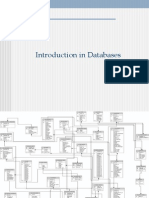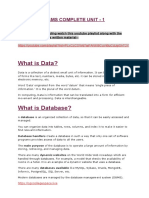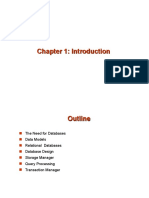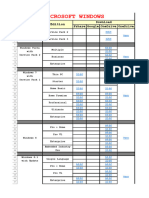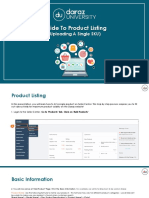0% found this document useful (0 votes)
32 views45 pagesW01 - Database Systems - Introduction
The document discusses the limitations of traditional file systems for managing large datasets and introduces Database Management Systems (DBMS) as a solution. It covers key components of DBMS, including query processing, transaction management, and the importance of ACID properties. Additionally, it highlights the evolution of data storage models and the distinction between data lakes and data warehouses.
Uploaded by
yasirasad341Copyright
© © All Rights Reserved
We take content rights seriously. If you suspect this is your content, claim it here.
Available Formats
Download as PPTX, PDF, TXT or read online on Scribd
0% found this document useful (0 votes)
32 views45 pagesW01 - Database Systems - Introduction
The document discusses the limitations of traditional file systems for managing large datasets and introduces Database Management Systems (DBMS) as a solution. It covers key components of DBMS, including query processing, transaction management, and the importance of ACID properties. Additionally, it highlights the evolution of data storage models and the distinction between data lakes and data warehouses.
Uploaded by
yasirasad341Copyright
© © All Rights Reserved
We take content rights seriously. If you suspect this is your content, claim it here.
Available Formats
Download as PPTX, PDF, TXT or read online on Scribd
/ 45


















